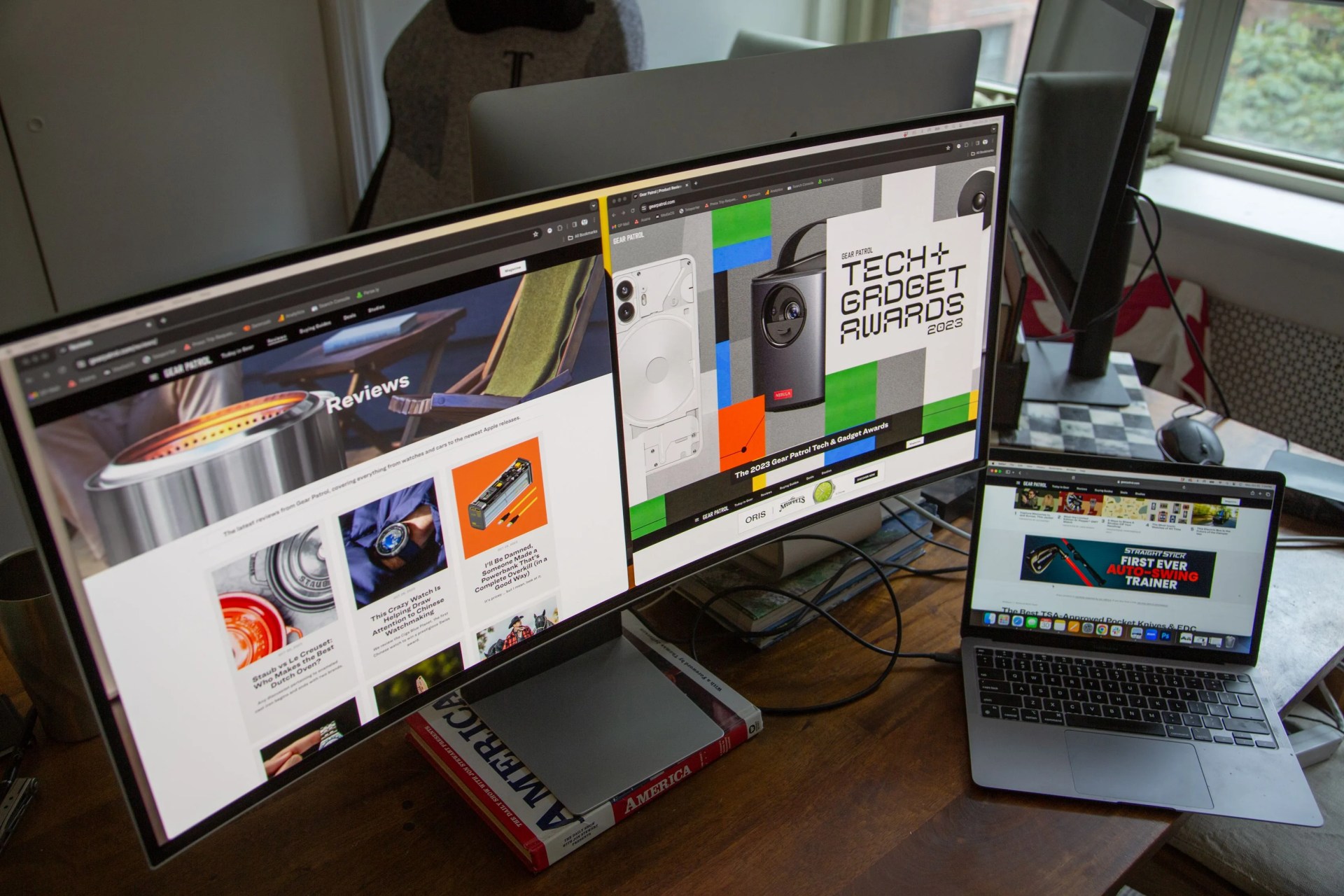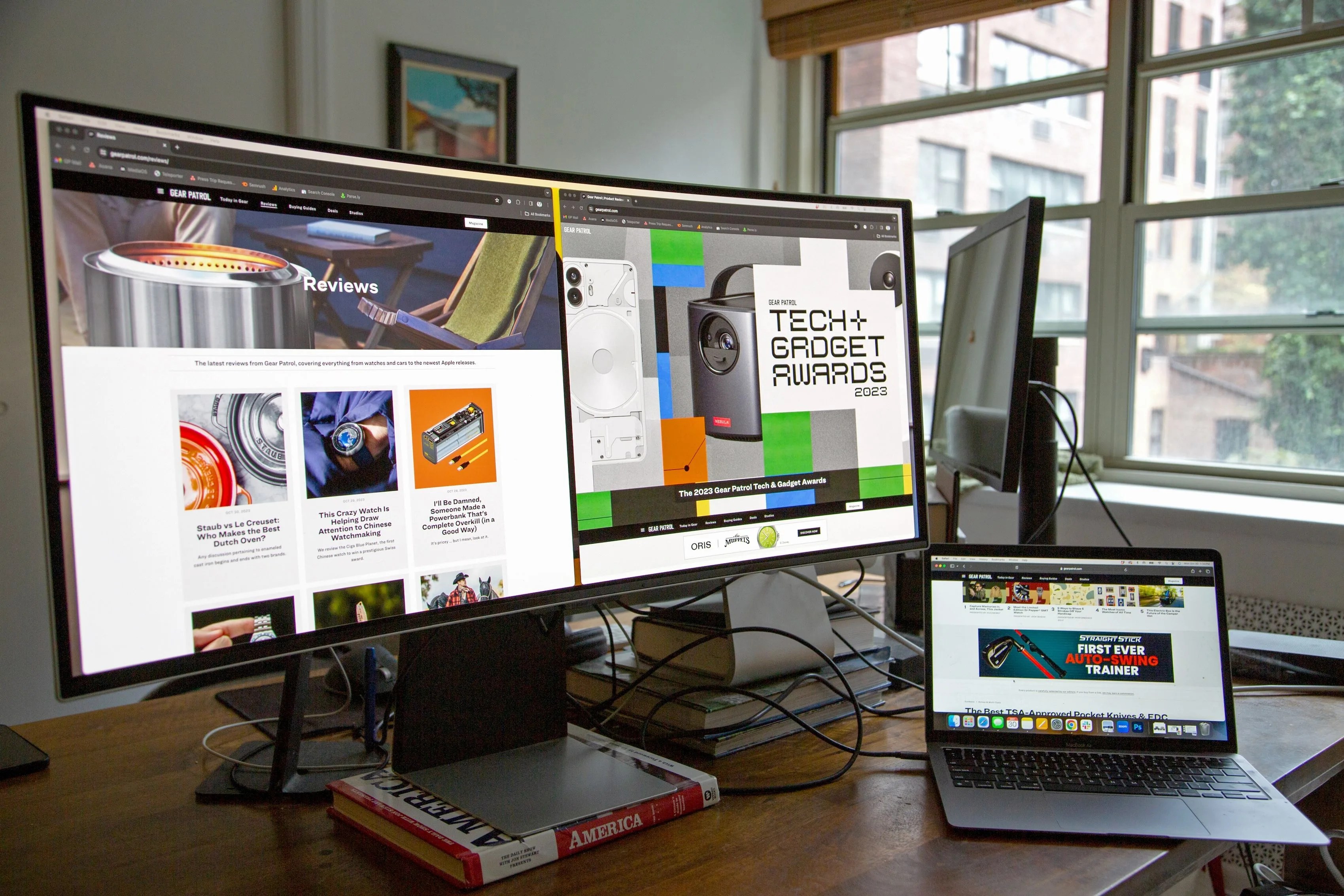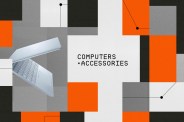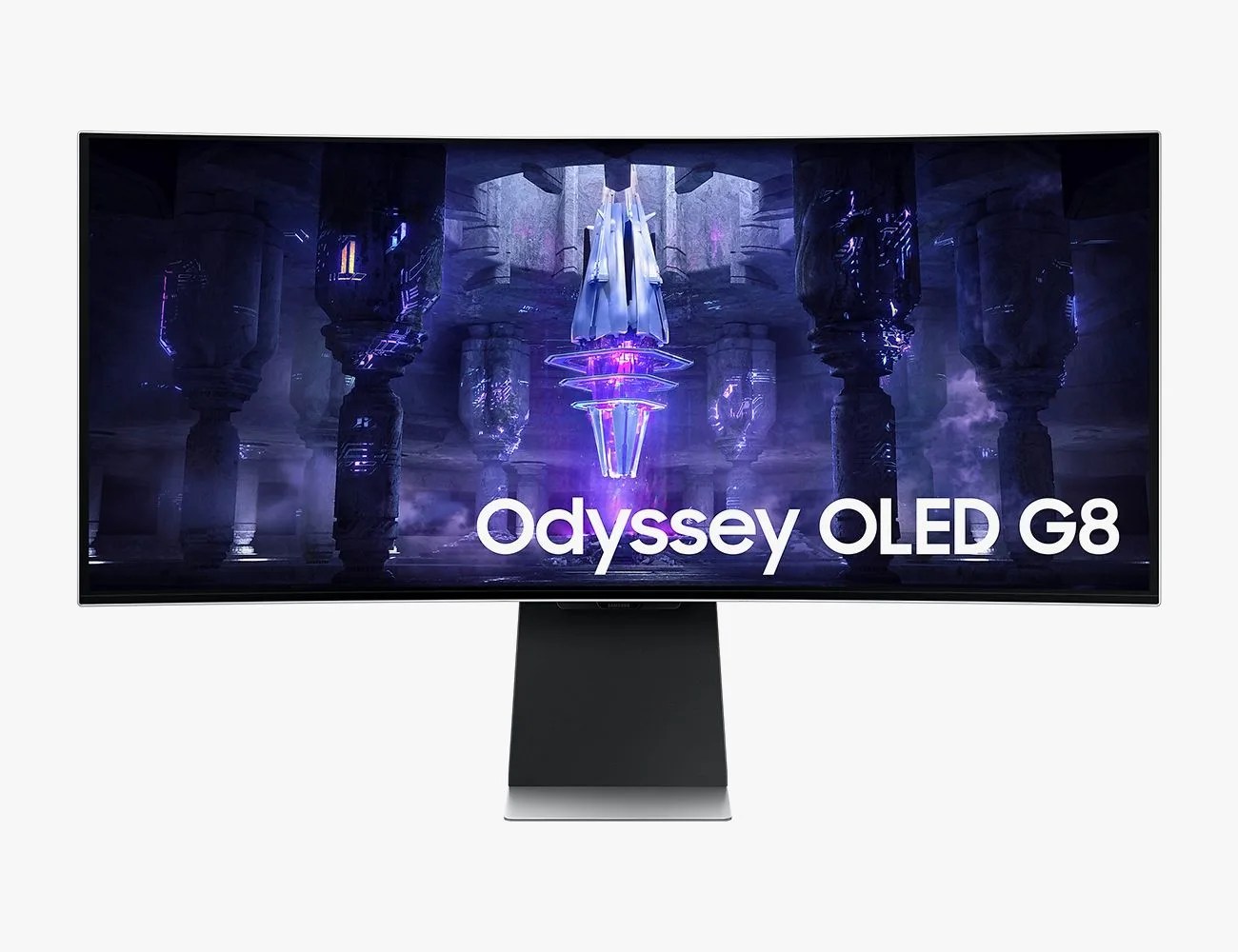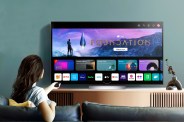Full disclosure: I am very much not a video game person. Blame my parents: being of a liberal mindset and having grown up in the 1950s and 1960s, the concept itself seemed alien to their ideas of youth, so they took a very hard line against the likes of Sega, Nintendo and Playstation. While other kids were building hand-eye coordination and improving reaction time, I was stuck reading books and playing outside and learning, like some kind of schmuck. My brief tastes of video gaming only came when I went over to a friend’s house, at which point I would immediately be demolished at Goldeneye or MarioKart due to my inexperience.
Products in the Guide
-
Samsung Odyssey OLED G8 34
Read more
That said, I’ve always had an appreciation for gaming tech, even if only because I usually wound up spending more time staring at the console and graphics when playing after dying 60 seconds into a mission and handing the controls off to someone else. So when I spotted Samsung’s Odyssey OLED G8 monitor for the first time, suffice it to say, I was intrigued.
The Odyssey G8 is meant for gamers: its 175-Hz refresh rate means it can cycle its display ten times for every blink; its OLED screen offers incredible colors, clarity and crispness; and its frankly astounding 0.03-millisecond response time helps players maximize their advantages over their foes. But from my video game-agnostic perspective, this curved monitor’s appeal lies elsewhere. Samsung’s curved monitor, it turns out, is dynamite for the tasks I actually spend most of my day staring at a computer for: work.
To learn more about our testing methodology and how we evaluate products, head here.
It’s all about screen real estate, baby
More screen space equals more productivity. It’s been proven by science — a second screen boosts productivity by a whopping 42 percent — and it’s borne out anecdotally by most of us who’ve ever worked on computers. In a world where it feels like we spend more and more time staring at the little screens of our phones, it’s a luxury to be able to operate on a display capable of showing more than a couple dozen lines of text at a time. The more square footage a screen has, the less shifting between windows you have to do — which means less distraction and more staying on task.
